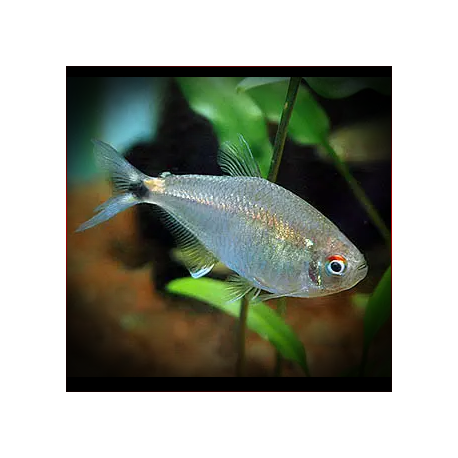More info
Datasheet
| Minimum Tank Size | 430 litres / 113.59 US gallons |
| Maximum Size | 15.0cm / 5.91inches |
| Temperature | 20°C / 68.00°F - 28°C / 82.40°F |
| Hardness | 2.02dgH / 36ppm - 20.00dgH / 357ppm |
| pH | 5.5-7.5 |
General Description
The Two Spot Astyanax (Astyanax bimaculatus) is a species within the Characidae family, belonging to the classification order Characiformes. It is not a commonly kept aquarium fish and is often encountered unintentionally within shipments of other species. Due to its resemblance to other disc characins, it can be an intriguing addition to larger aquaria setups.
Aquarium Setup
The recommended tank size for housing Two Spot Astyanax is a minimum of 430 litres, providing ample swimming space. Decorate the tank with driftwood, twisted roots, and rounded stones, while plants may be at risk of being consumed. Consider robust plants such as Anubias or Microsorum, and ensure a mild water current by positioning the filter outlet strategically. For specific water conditions, refer to the hardness (36-357ppm), pH (5.5-7.5), and temperature (20-28°C) details.
Behaviour
Known for not being overly aggressive, this species may not be suitable for communities containing small or slow-moving fish. In larger aquarium settings, it can serve as a captivating alternative to more common disc characins of the Metynnis and Myleus genera.
Feeding and Diet
The Two Spot Astyanax has an omnivorous diet in the wild, feeding primarily on invertebrates and plant matter. In captivity, supplement their diet with live and frozen foods regularly, although high-quality dried products can suffice as a staple diet.
Reproduction & Dimorphism
Successful breeding of the Two Spot Astyanax often involves a ratio of 2 males to 1 female. Little lighting is necessary, and the presence of fine-leaved plants like Cabomba or Java moss can aid in spawning. During reproduction, females appear round in the belly when carrying eggs and exhibit less vibrant colors than males. A single female can produce thousands of eggs, hatching within 24 hours, with the fry becoming free-swimming shortly after.
Habitat and Distribution
This species is versatile in its habitat, found in various biotopes ranging from fast-flowing rivers to ponds with seasonal variations. The distribution of Astyanax bimaculatus spans from Panama throughout the vast Amazon and Orinoco river basins, with sightings in countries like Trinidad and Tobago, Colombia, Brazil, and Argentina.

